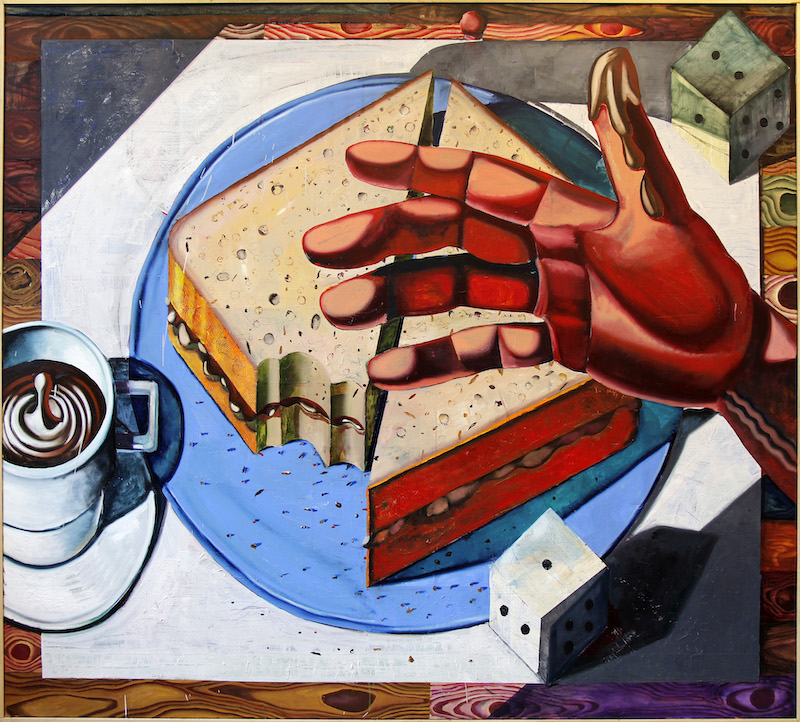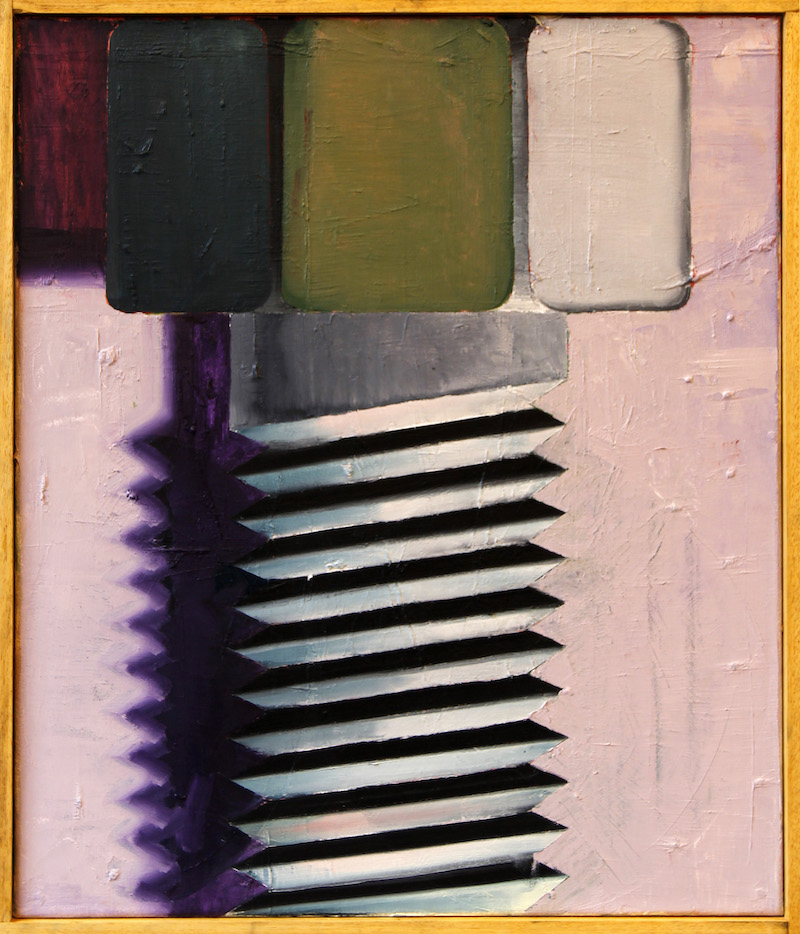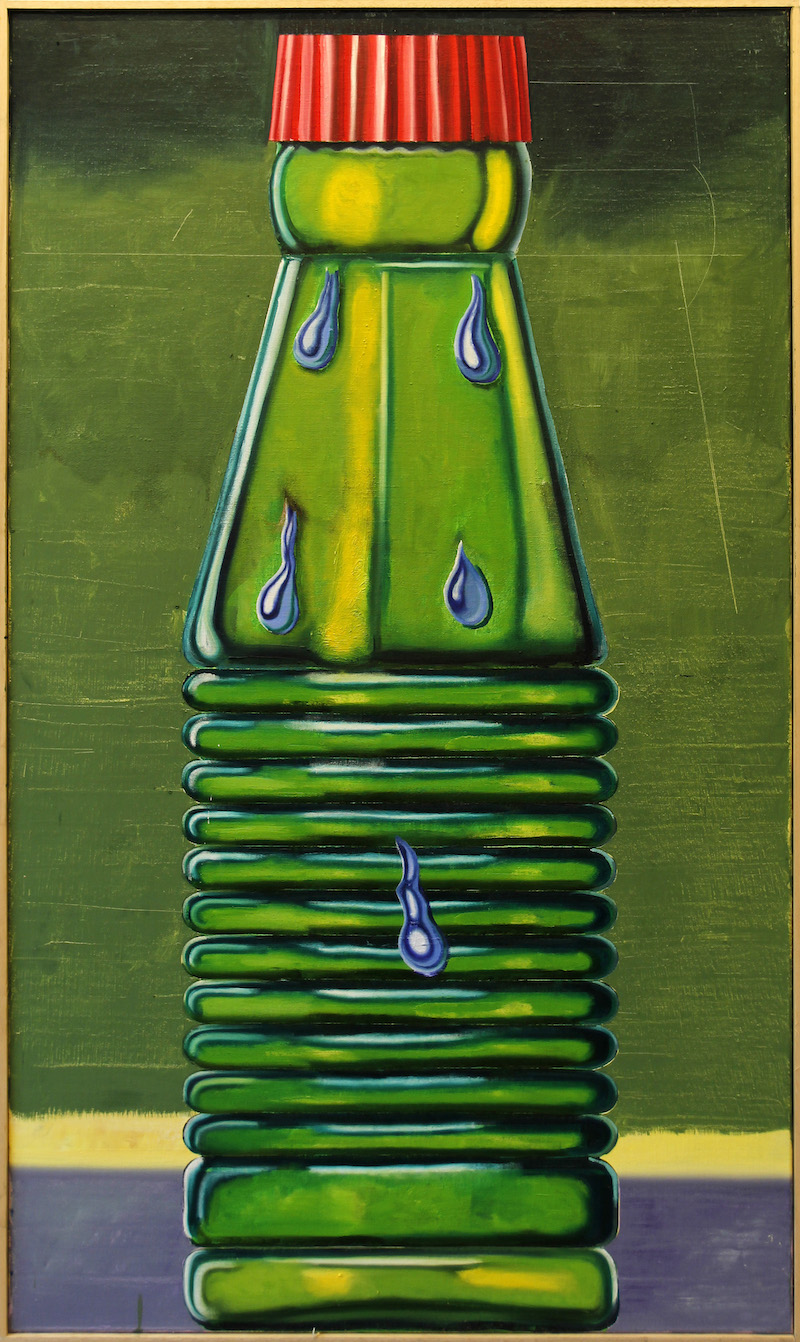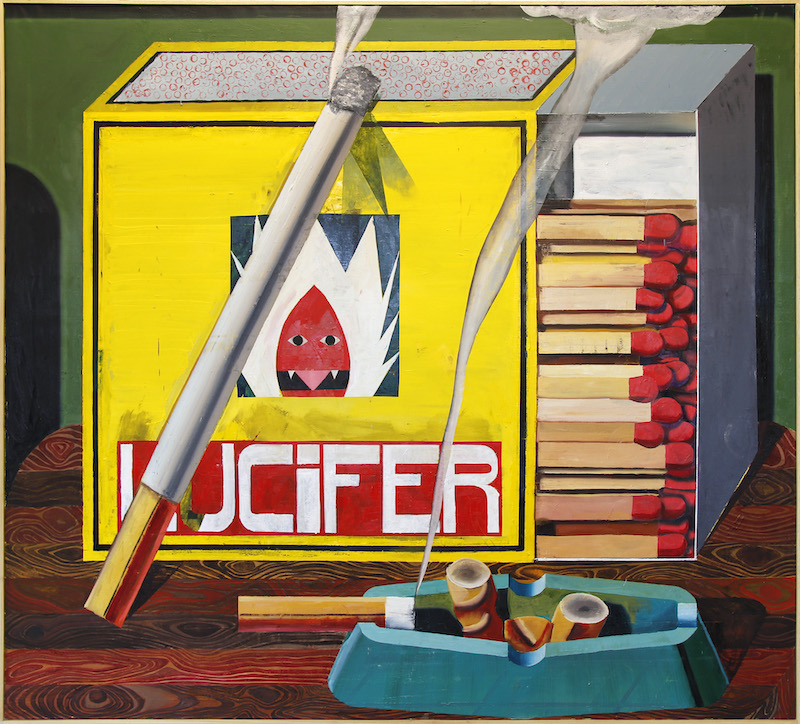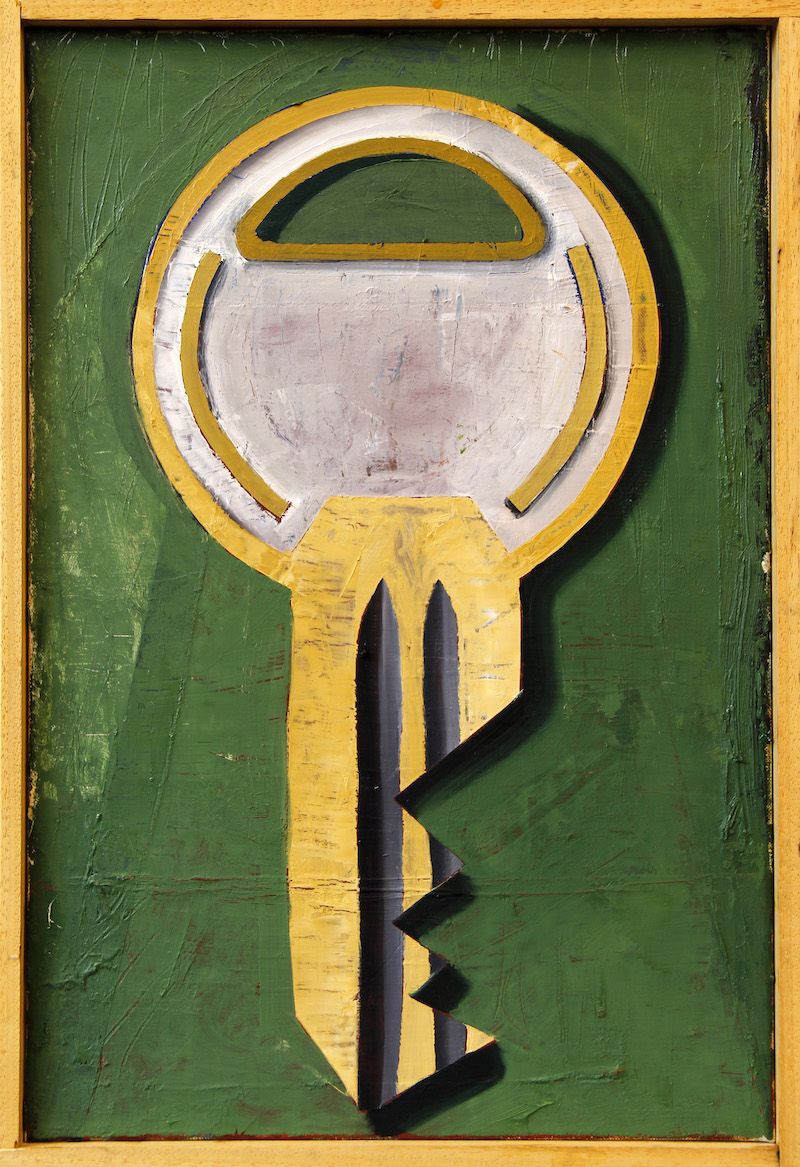Back in June 2021, we've covered a milestone solo debut by Kristof Santy, and we're excited to see the artist opening his second solo show with Christine König Galerie's KOENIG2 by_robbygreif space in Vienna. On view from January 14th, 2022 until March 5th, Icon will be introducing the new series of works by the Belgian painter, presented in a carefully considered installation.
Upon entering Kristof Santy’s spacious workspace or his family home in Roeselare, Belgium, there is a sense of eagerness and thirst for knowledge that radiates from the objects scattered through the rooms and corridors. Besides the essential painting materials and hardware, there is a large bookshelf filled to the brim with a variety of titles, as well as a vast collection of random possessions, vintage tools, figurines, souvenirs, and trinkets that indicate the artist’s inquisitive and ever curious mind. It was that aspect of his character that instantly connected with the wunderkammer exhibit at Kunsthistorisches Museum in Vienna, during his visit to the city in 2021. Presenting a compact and focused collection of items that by profound criteria earned a greater significance outside their everyday purpose or meaning, the presentation resonated with his own idea of valuing the material objects for qualities beyond their inherent purpose. Around the same time, the artist visited the Victoria and Albert Museum in London and was particularly intrigued by the cabinet exhibiting antique keys and locks. Seeing everyday tools we all carry in our pockets, presented as a precious museum relic, again resonated with Santy’s interest in exploring the common object’s forms and transforming it into a distinguished, formal motif on a picture plane.
This attitude towards materiality and representation is to some extent in direct opposition with the main ideas of Malevich’s Suprematism, which championed the absence of representation, the lack of contour, perspective, or dimension. The placement of the iconic black square in the corner of the room at The Last Futurist Exhibition of Paintings 0,10 in Petrograd, Russia, in 1915, changed the direction of modern and contemporary art, but also, prompted Santy to rethink the concept of icons, our relationship with them and what they represent. With his Austrian solo debut, Icon, the Belgian artist plays with the spiritual and vernacular meaning of the sacred work of art, proposing the most ordinary everyday objects instead of the traditional religious imagery. Both exploring the connection between human and transcendent as well subtly paying tribute to the father of non-objective or abstract art, he is continuously pursuing his main interest - working with the monumentality and frontal representation of the recognizable forms. Be it everyday food (Boterham met choco, Dubbele hamburger met vettige saus, or Braadworst, all 2021), objects (Lucifer, Fles 1, both 2021), or the wide range of common tools and keys, he is continuing his rigorous research of painting as a medium strongly influenced by the folk art tradition as well as Jean Brusselmans' oeuvre.
In this body of work, Santy is further pushing his technical curiosity trying out new methods of layering and manipulating oils. By depicting the simple, yet form-rich objects as keys or a roll of tape, he studies the color, texture, and surface, creating a highly stylized representation of the everyday item. Seemingly depicting the meticulously manufactured device with great precision, in reality, these paintings are merely conveying their physicality and suggesting their personality. Applying and manipulating the paint in a variety of ways so it captures crucial structural elements, the creative process sometimes extends to improvisation with unexpected provisions. Placing the motif in the middle of the format against the blank background and all the way to its borders, the artist is putting the accent on the variety of shapes and surfaces while converting principally elemental compositions into an exciting, monumental picture plane. With an interest in the subjectivity of perceptions as promoted by Stanislaw Lem's Solaris, materialism is here being employed as a formal vocabulary at the base of a universally recognizable language. In combination with the consistent color choices that evoke the atmosphere of the times past, each piece is imbued with a sentient ambiance, somewhat animating the lifeless subjects and giving them a form of personality. Eventually, the well-balanced use of the formal elements, from the motif itself over its stylized depiction to the rich textures and the overall physical appearance of the works, reexamines our relationship with everyday objects in the context of everyday life dynamics. —Sasha Bogojev

